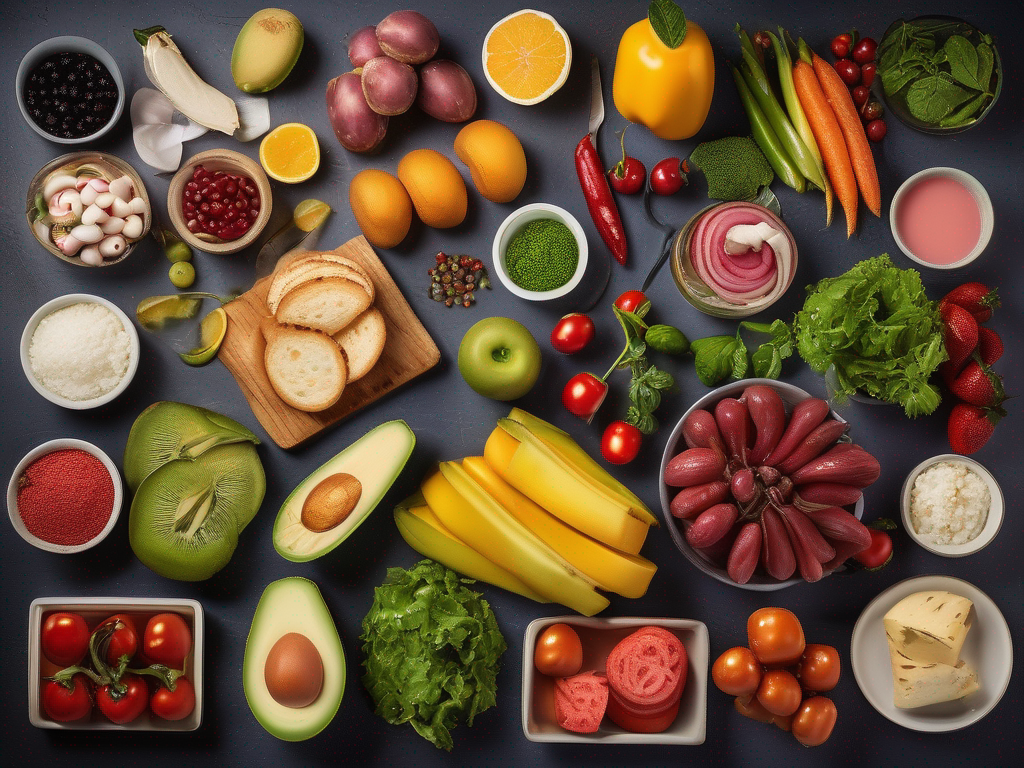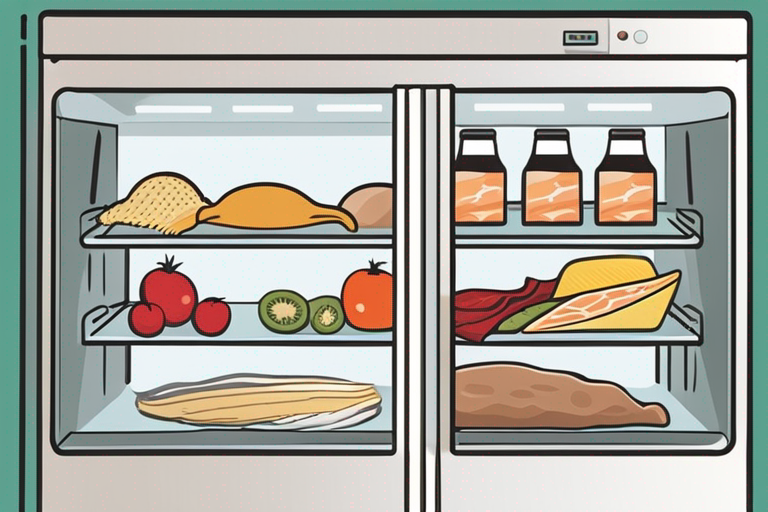
The Ultimate Refrigerated Food List: Keeping Your Food Safe and Fresh
Get Your Free Food Safety Cheat Sheet
30 most common foods with instant answers. Print it and stick it on your fridge—completely free!
The Ultimate Refrigerated Food List: Keeping Your Food Safe and Fresh
In today's fast-paced world, refrigeration plays a crucial role in keeping our food safe and fresh for consumption. Properly storing food in the refrigerator not only helps prevent foodborne illnesses but also extends the shelf life of perishable items. In this comprehensive guide, we will provide you with an extensive list of foods that should be refrigerated, along with essential tips to ensure food safety and quality.
Why Refrigeration is Important
Refrigeration slows down the growth of bacteria, yeasts, and molds that can cause food spoilage and foodborne illnesses. By maintaining a temperature below 40°F (4°C), refrigerators help preserve the freshness, flavor, and nutritional value of various food items. Here are some key reasons why refrigeration is essential:
Benefits of Refrigeration:
- Prevents Spoilage: Refrigeration inhibits the growth of harmful microorganisms that can spoil food.
- Extends Shelf Life: Properly refrigerated foods last longer, reducing food waste.
- Maintains Quality: Cold temperatures help retain the texture, taste, and nutrients of foods.
- Ensures Food Safety: Refrigeration reduces the risk of foodborne illnesses caused by bacteria like Salmonella, E. coli, and Listeria.
Refrigerated Food List
Now, let's explore a comprehensive list of foods that should be stored in the refrigerator to maintain freshness and safety:
Fruits:
- Berries (strawberries, blueberries, raspberries)
- Citrus fruits (oranges, lemons, limes)
- Grapes
- Apples (except for Granny Smith)
- Kiwi
- Pineapple
- Melons (watermelon, cantaloupe)
Vegetables:
- Leafy greens (lettuce, spinach, kale)
- Broccoli
- Cauliflower
- Carrots
- Bell peppers
- Cucumbers
- Zucchini
- Mushrooms
Dairy and Eggs:
- Milk (cow's milk, almond milk)
- Yogurt
- Cheese (hard and soft varieties)
- Butter
- Eggs
Meat and Seafood:
- Chicken
- Beef
- Pork
- Fish (salmon, tilapia)
- Shrimp
- Ground meat (beef, turkey)
Miscellaneous:
- Condiments (ketchup, mustard, mayonnaise)
- Salad dressings
- Fresh herbs (parsley, cilantro, mint)
- Leftovers (cooked meals)
- Deli meats
Refrigeration Tips for Food Safety
To ensure the safety and quality of your refrigerated foods, follow these practical tips:
- Check Temperature Settings: Keep your refrigerator at 40°F (4°C) or below to maintain food safety.
- Properly Store Foods: Use airtight containers or wraps to prevent cross-contamination and odors.
- Organize Your Fridge: Store raw meats on the bottom shelf to prevent drips onto other foods.
- Check Expiration Dates: Regularly inspect foods for expiration dates and discard any expired items.
- Rotate Foods: Use the "first in, first out" method to consume perishable items before they spoil.
Conclusion
Refrigeration is a cornerstone of food safety and quality. By storing a wide range of foods in the refrigerator and following proper storage practices, you can minimize food waste and enjoy fresh, safe meals. Remember to regularly clean and maintain your refrigerator to ensure optimal performance. Stay informed about food safety guidelines and make refrigeration a priority in your kitchen to protect your health and well-being. Happy refrigerating!
Remember, a well-organized and clean refrigerator not only keeps your food fresh but also helps prevent foodborne illnesses. Stay tuned for more food safety tips and storage hacks in our upcoming blog posts.

Authoritative Food Safety References
These agencies and university labs inform every tip and health precaution we publish.
USDA FoodKeeper – Cold Storage Guidelines
Official refrigerator, freezer, and pantry timelines maintained by the U.S. Department of Agriculture.
Visit USDA FoodKeeperFDA Produce Safety Rule & Grower Guidance
Field-to-fridge handling practices that prevent contamination of fruits, vegetables, and leafy greens.
Visit FDA Produce SafetyCDC Foodborne Illness Prevention Hub
Surveillance-backed guidance on pathogens, symptoms, and steps to reduce foodborne illness risk.
Visit CDC Food SafetyUC Davis Postharvest Technology Center
University research detailing optimal storage atmospheres for produce after harvest.
Visit UC Davis PostharvestPenn State Extension – Home Food Preservation & Safety
Peer-reviewed extension bulletins on safe canning, chilling, and reheating practices.
Visit Penn State ExtensionCan I freeze milk to extend its shelf life?
What is the best way to store fresh produce in the refrigerator?
Is it safe to eat leftovers that have been in the refrigerator for a week?
How can I tell if my refrigerator is maintaining a safe temperature for food storage?
Get Your Free Food Safety Cheat Sheet
30 most common foods with instant answers. Print it and stick it on your fridge—completely free! Want more? Upgrade to the complete guide with 70+ foods.
Scan your food directly and get instant safety info using our AI-powered camera feature.